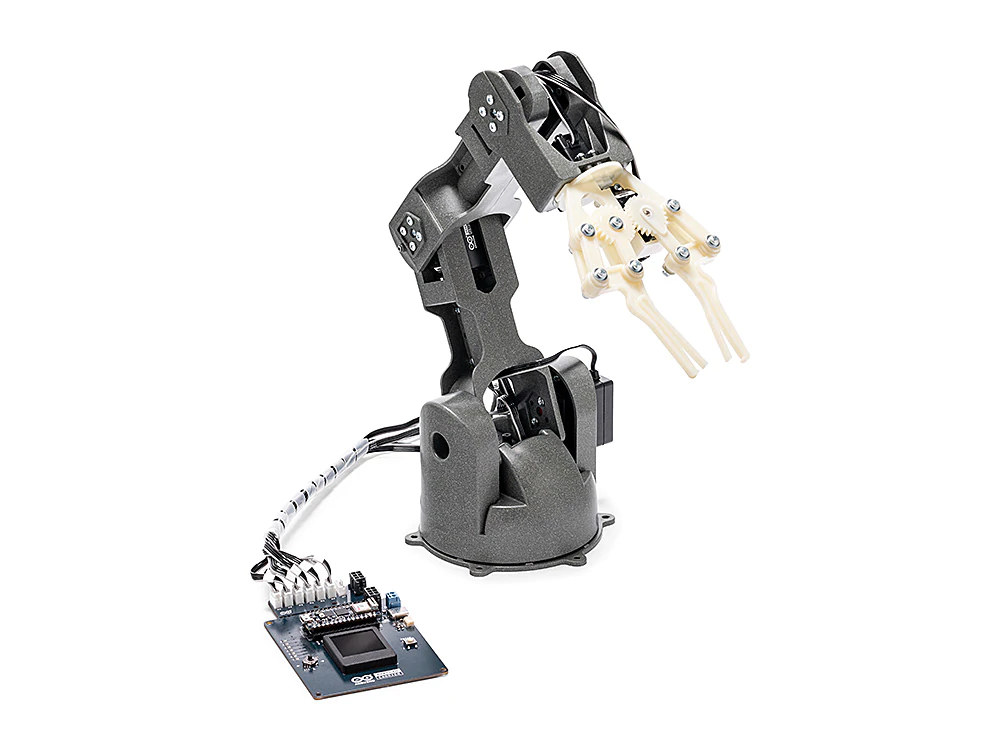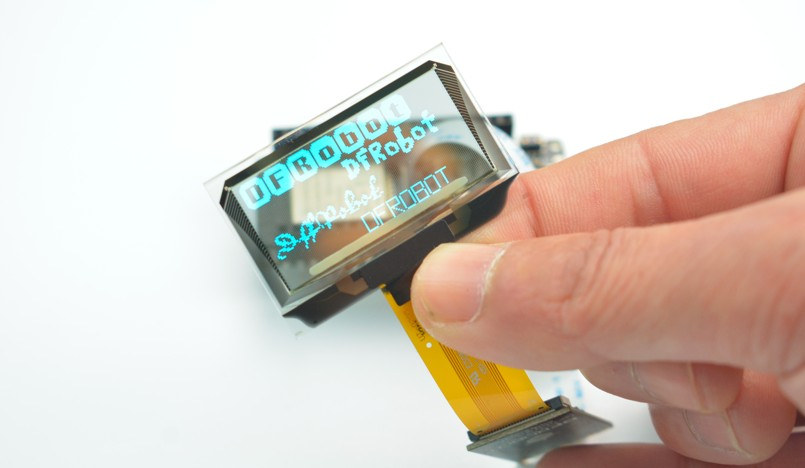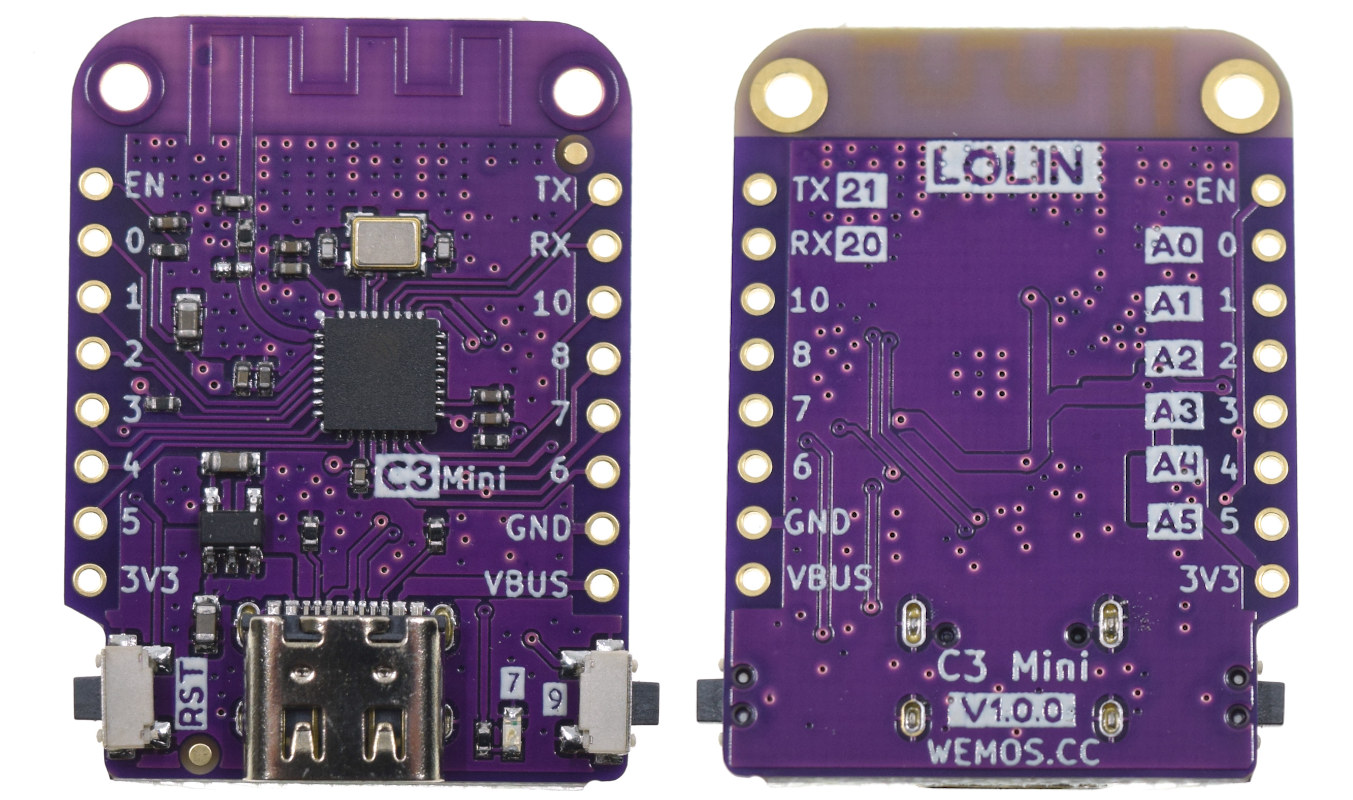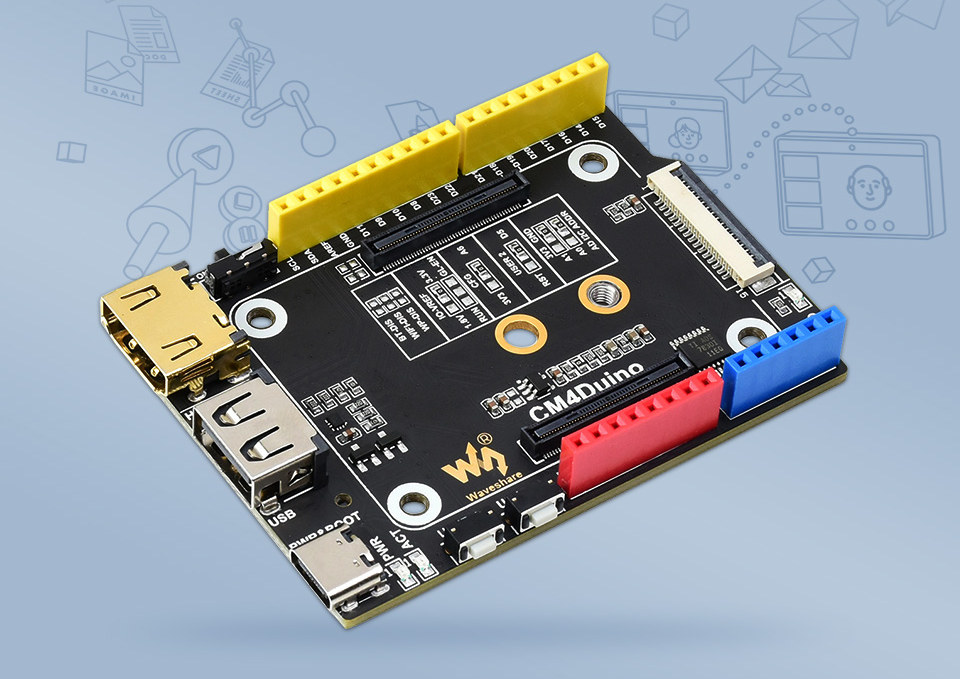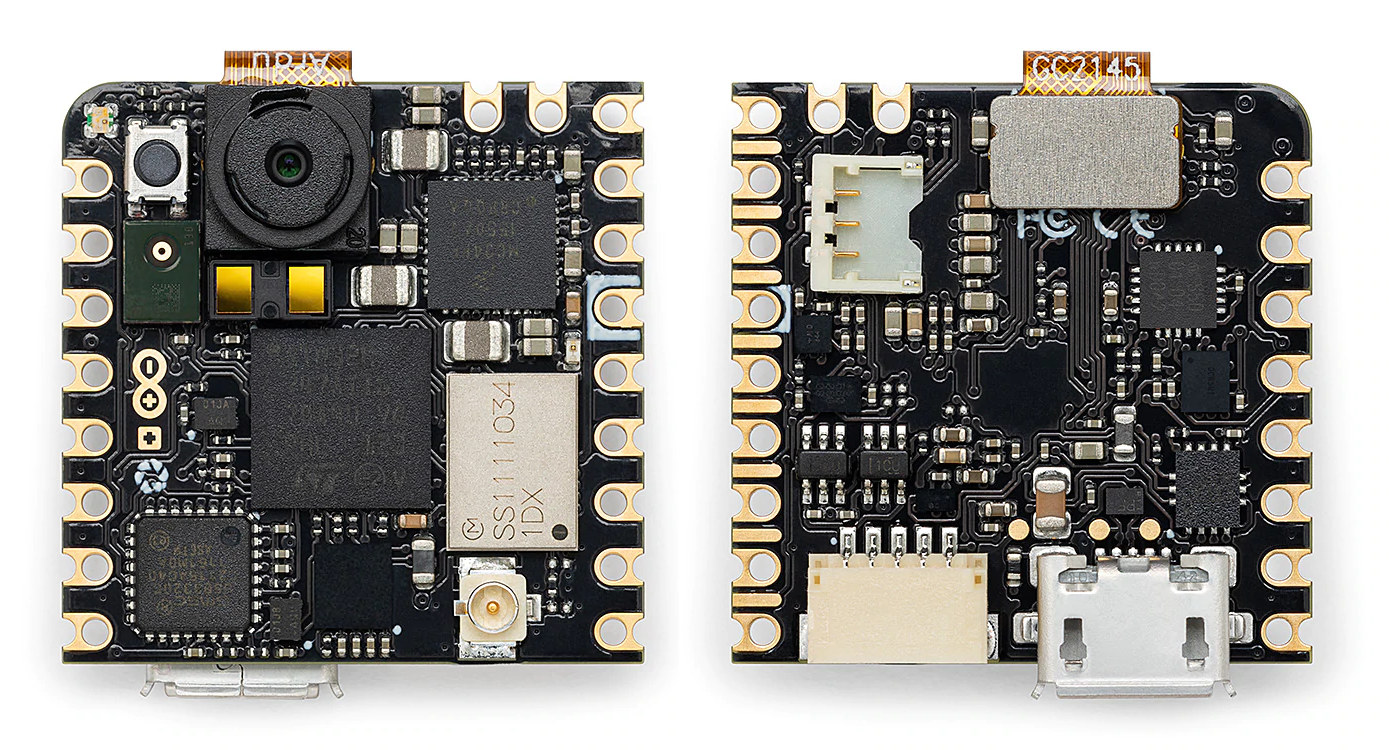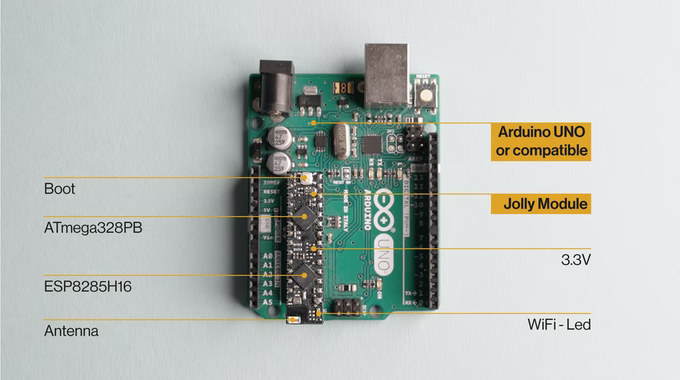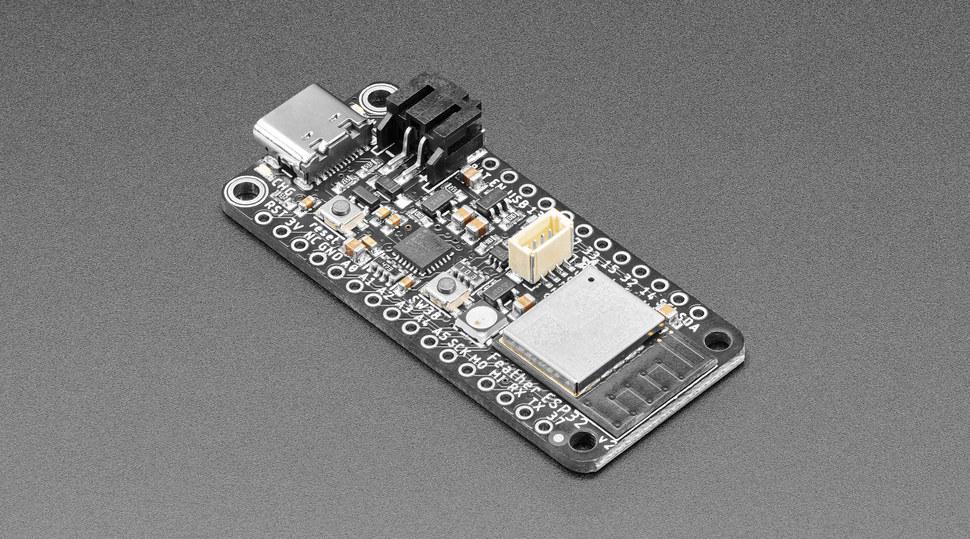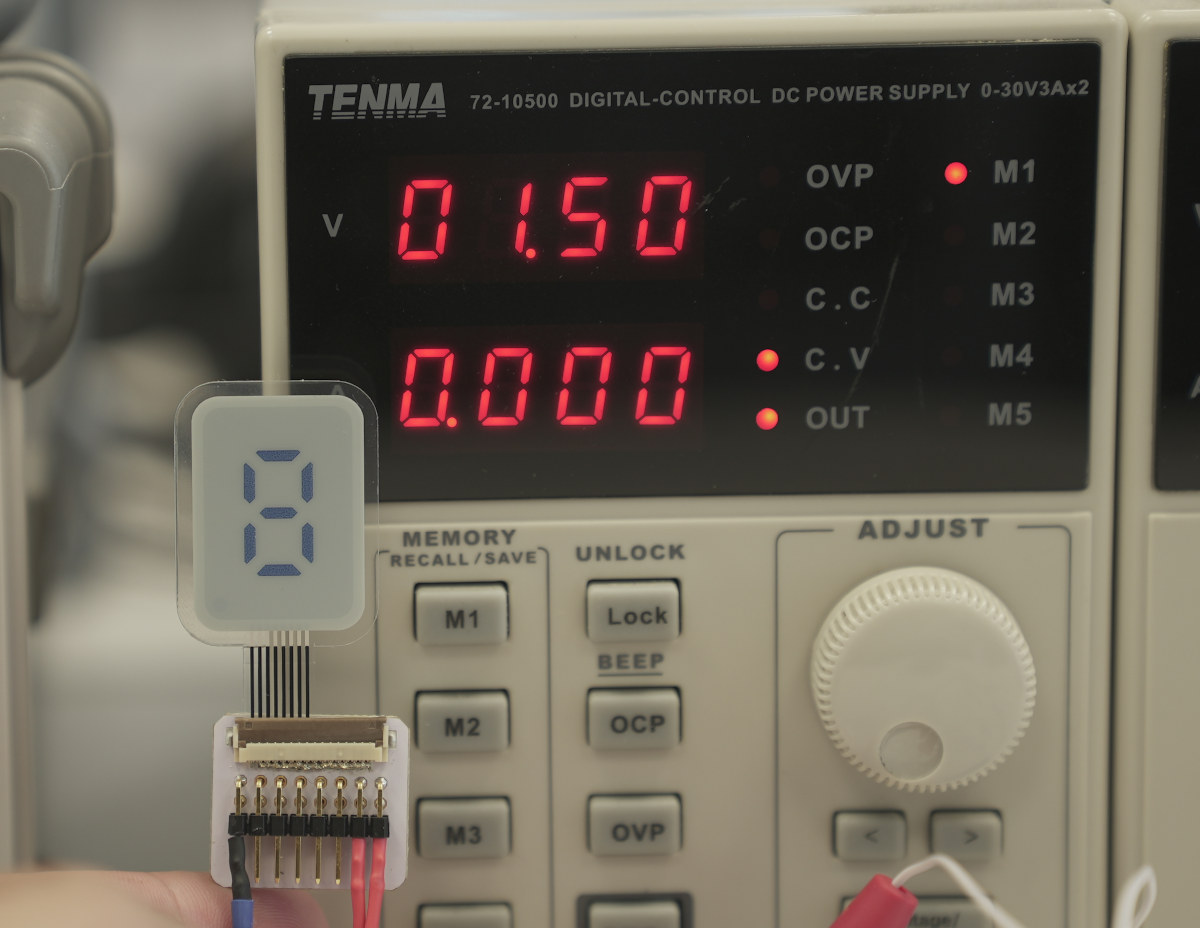Arduino Education has just launched the Braccio++ robotic arm for advanced students in high school or at university in order to let them experiment with a 6 DOF, industrial, assembly line-inspired robot. The new robotic arm provides an upgrade to the Tinkerkit Braccio robot and has been designed to assist in teaching real-world manufacturing techniques,topics such as physics and robotics, and concepts like motions, forces, torque, gear ratio, stability, and weight of payload. The Arduino Braccio++ is comprised of the Braccio carrier board equipped with an Arduino Nano RP2040 Connect that controls six Arduino RS485 Smart Servo Motors with specifically four SR418D servo motors for the arm joints, and two SR312 servo motors for the claw. Four lessons and two projects are included in the kit, and it’s made for up to three students. Arduino says the new robotic arm is made of recycled and eco-friendly materials with the […]
1.51-inch transparent OLED display works over GDI or SPI interface
We’ve seen transparent, see-through displays at least since 2010 for retail applications, and over the years, these types of transparent displays or variants have made it to consumer devices like smartwatches and notch-free smartphones. But I don’t think I had ever seen transparent displays for the maker market, and DFRobot Fermion is 1.51-inch transparent OLED display with 128×64 resolution that is connected to the host MCU via SPI or GDI (General Display Interface) interface. Fermion specifications: 1.51-inch transparent OLED display with blue pixels based on SSD1309 driver Resolution – 128×64 (transparent part: 128×56) Display interface – 8-bit 68xx/80xx Parallel, 3-/4-wire SPI, I2C Adapter Interface – SPI, GDI Operating Voltage – 3.3V Dimensions Screen Size – 41.92 x 27.08mm Display Area – 35.05 x 15.32 mm Pixel Pitch – 0.274 x 0.274mm Pixel Size – 0.254 x 0.254mm Adapter Size – 18 x 28mm/0.71 x 1.10inch Temperature Range – -40~70°C There […]
LOLIN C3 Mini ESP32-C3 board is compatible with Wemos D1 Mini shields
Wemos LOLIN C3 Mini board is powered by Espressif ESP32-C3 WiFi and BLE RISC-V microcontroller and follows the company’s earlier Wemos D1 Mini (ESP8266) and LOLIN S2 Mini (ESP32-S2) form factor for compatibility with the original stackable Wemos D1 shields. The tiny board comes with 4MB flash embedded in the ESP32-C3 chip, a USB Type-C connector, reset and user buttons, as well as sixteen through holes for GPIOs, VBUS, 3.3V, and ground signals. LOLIN C3 Mini V1.0.0 specifications: SoC – Espressif Systems ESP32-C3FH4 single-core 32-bit RISC-V (RV32IMC) microcontroller up to 160 MHz with 400 KB SRAM, 4MB Flash Connectivity – 2.4 GHz WiFi 4 and Bluetooth 5.0 LE (in SoC) Expansion headers – 2x 8-pin headers with up to 12x GPIO, ADC, I2C, SPI, UART (3.3V I/O voltage) USB – 1x Type-C USB for 5V power and programming Misc – Reset button and button 0 also used to enter Device […]
Waveshare CM4-Duino – An Arduino compatible carrier board for Raspberry Pi CM4
Waveshare CM4-Duino is a carrier board for Raspberry Pi Compute Module 4 (CM4) that follows Arduino UNO R3 form factor while offering HDMI output, a MIPI CSI camera interface, a USB interface, and even an M.2 M Key socket for expansion. This allows the board to reuse most Arduino shields while offering the flexibility of a more powerful Arm Linux platform that can further be expanded with an NVMe SSD or a wireless module through the included M.2 socket. Waveshare CM4-Duino specifications: Support SoM – All variants of Raspberry Pi Compute Module 4 Storage MicroSD card socket for Compute Module 4 Lite (without eMMC) variants Optional NVMe SSD via M.2 socket Video Output – HDMI up to 4Kp30 (not sure why 4Kp60 would not be supported) Camera I/F – 1x MIPI CSI-2 connector USB – 1x USB 2.0 Type-A header, 1x USB Type-C for power and programming Expansion M.2 M […]
Arduino Nicla Vision – A tiny STM32H7 board with 2MP camera, WiFi & Bluetooth LE, sensors
Arduino Nicla Vision is an ultra-compact (~2.3×2.3 cm) board powered by an STMicro STM32H7 dual-core Cortex-M7/M4 microcontroller, and equipped with a 2MP camera, a WiFi & Bluetooth LE module, and a few sensors. Those features make the board suitable for machine vision and edge computing applications such as asset tracking, image detection, object recognition, and predictive maintenance. For instance, image detection, facial recognition, automated optical inspection, vehicle plate reading, or gesture recognition can be added to projects, either using Nicla Vision as a standalone board or in combination with Portenta or MKR boards. Arduino Nicla Vision specifications: Microcontrollers – STMicro STM32H757AII6 dual-core MCU with Arm Cortex M7 @ 480MHz, Cortex-M4 @ 240MHz, 2 MB flash, 1MB RAM Storage – 16MB QSPI flash Connectivity – 2.4GHz WiFi 802.11b/g/n up to 65 Mbps and Bluetooth 5.1 BR/EDR/LE via Murata 1DX module Camera – 2MP GC2145 color camera. USB – Micro USB port […]
ESP8285 WiFi DIP module replaces ATMega328P MCU on Arduino UNO board (Crowdfunding)
Released over 10 years ago, Arduino UNO is still the best-selling Arduino board, but lacking WiFi in the IoT era is not ideal, so Gianluca Martino, Arduino co-founder and working with the company until 2015, decided to design the Jolly DIP module based on ESP8285 WiFi chip that can replace the ATmega328P 8-bit AVR DIP-40 microcontroller. Since ESP8285 cannot provide all I/Os, notably analog inputs offered by ATmega328P, Gianluca combined it with the ATMega328PB microcontroller in a compact SMD package to offer firmware compatibility plus WiFi connectivity in the same DIP form factor. Jolly module specifications: MCU – Microchip ATMega328PB 8-bit AVR microcontroller with 32 KB ISP Flash, 1 KB EEPROM, 2 KB SRAM (Based on data from the datasheet) Wireless chip – Espressif Systems ESP8285H16 WiFi SoC with 2MB integrated flash plus ceramic antenna Communication interfaces between the two chips – SPI + UART (the latter exclusively for ESP8285 […]
Adafruit ESP32 Feather V2 ships with 8 MB Flash, 2 MB PSRAM, USB-C port, and more
Adafruit ESP32 Feather V2 (aka Huzzah32 Feather V2) is an upgrade to the company’s HUZZAH32 ESP32 Feather, still based on ESP32 WiFi & Bluetooth processor, and designed with the initial goal of replacing the obsolete CP2104 with the CP2012N USB to TLL chip. But Adafruit ended up doing a complete redesign with extra storage (8MB flash in total), 2MB PSRAM, a USB-C port replacing the Micro USB port, an extra tactile switch, an RGB LED, lower power consumption, and more. Adafruit ESP32 Feather V2 specifications: Wireless module – Espressif Systems ESP32-PICO-Mini-02 (PDF datasheet) with an ESP32 dual-core Xtensa processor @ up to 240MHz with 2.4 GHz WiFi and Bluetooth Classic/LE, 8MB flash, 2MB PSRAM, PCB antenna, FCC/CE certification. USB – USB Type-C port for power and programming via CP2102N chipset I/Os 16-pin and 12-pin GPIO headers with GPIOs, analog inputs, I2C, UART, SPI, DAC, etc… STEMMA QT connector for I2C devices, […]
Ultra-low power printed flexible E-paper displays work with Arduino
Ynvisible Interactive will soon release upgrades to their printed flexible E-paper displays that consume 50% less energy per switch and can last 10 longer when switched on and off, with the company claiming to offer the lowest energy-consuming displays in the e-paper industry. Those displays are mostly used in specific industries such as digital signage, smart monitoring labels, authenticity & security, and retail. While we have very little information about the new upgrades, I’ve noticed the company is offering a development kit with several “ultra-low-power, thin and flexible Segment E-Paper Displays”, so let’s have a look. Here are some of the specifications of the displays part of the kit: White Reflectance – 40% Contrast Ratio (Yb/Yd) – 1:3 Angle Dependency – No, lambertian Thickness – 300 μm (0.3 mm) Graphical layout – Segments with 1mm to 100mm dimensions Response time – 100-1000 ms Driving voltage – 1.5 V (direct drive) […]


